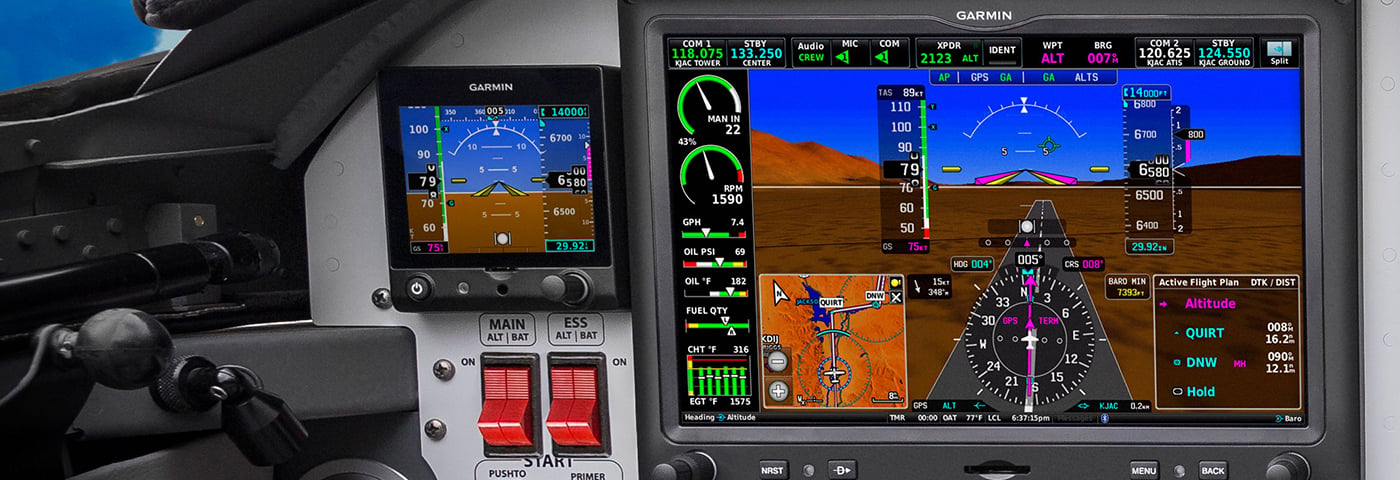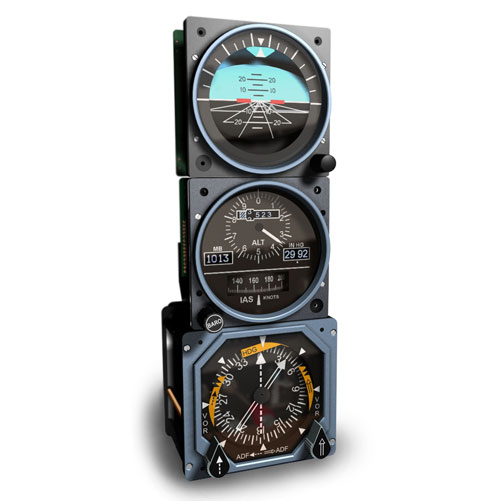G1000 vs. Standard 6-pack (Flight Training)
#11
And N7, modern cockpits have electronic backups to “glass”
This:


Versus

Separate power sources, separate standby Air Data Computer, standby extra everything.
I know which one I’d choose.
Don’t backup a screwdriver with a fork.
#12
Line Holder
Joined APC: Feb 2018
Posts: 99
Interesting and nice looking consolidation. I've seen it before but always wondered about the following:
Separate Power Source
Does that mean a separate Bus, or a different path off the same Bus?
ADC Standby
Would the standby ADC drive input to Conventional Instruments? The all-in -one Glass backup shows Attitude, Airspeed and Altitude. What happens if/when ADC is lost to that single unit and/or if electrical is lost to that single unit? Assumes a double failure of the primary GDU and All-In-One backup.
In that scenario, would having stand-alone Conventional units still provide coverage?
#13
I’m not even going to answer that as it’s pointless.
I’m sorry but you don’t have enough systems knowledge to get the concept.
A back-up power source is never off the same bus.
Standby instruments have their own separate power source like automatically recharged batteries.
There are pretty intense redundancies required by the certification process.
I’m sorry but you don’t have enough systems knowledge to get the concept.
A back-up power source is never off the same bus.
Standby instruments have their own separate power source like automatically recharged batteries.
There are pretty intense redundancies required by the certification process.
#14
On Reserve
Joined APC: Nov 2017
Posts: 13
Get your private with steam gauges, eyes need to be outside. Instrument with the glass, you’re going to be staring at the panel anyway, may as well be a G1000. After that swap back and forth if you can to stay proficient on both. If you end up starting in cargo you will be glad you have a good grasp on the 6 pack and the other way around should you go to regional jets.
#15
He wants to go from zero - VLJ owner.
And I would never recommend tondo your IFR in a new airplane with new avionics that you’ve never flown before.
So your IFR in an airplane that you are comfortable in.
The one you’ve just used for your Private.
#17
To me it seems a poor choice to start out concerned with advanced avionics
Learn how an airplane flies and use outside references. Learn to spin, do some aerobatics and navigate by looking outside. Develop confidence in aircraft handling then add the ability to follow the magic box. Don’t be the guy who can’t do it without crutches.
Learn how an airplane flies and use outside references. Learn to spin, do some aerobatics and navigate by looking outside. Develop confidence in aircraft handling then add the ability to follow the magic box. Don’t be the guy who can’t do it without crutches.
#18
as a CFI with too many thousands of hours of instructing from C152s to CRJ200s, and as a line pilot, take it from me. Learn in a traditional cockpit (6pack). Its cheaper, you'll learn better instrument scanning skills, and the transition is easier from round to glass. I have taught a LOT of people and every last one of them had an easy time going from round to glass. But the reversed ones (ones who learned in a Diamond and then went to the King Air....it was just rough.
A lot of people say "oh learn on glass because you'll fly jets with them one day". Well, my best advice is to fly the plane you are flying "now". No need to fly a little 1700lb Cessna 172 like a jet. Its not a jet. Fly the Cessna like a Cessna. There will be plenty of time to take the fun out of flying in jets later in your career.
A lot of people say "oh learn on glass because you'll fly jets with them one day". Well, my best advice is to fly the plane you are flying "now". No need to fly a little 1700lb Cessna 172 like a jet. Its not a jet. Fly the Cessna like a Cessna. There will be plenty of time to take the fun out of flying in jets later in your career.
#19
What is not being touched on here is the that the term " 6 pack" is not the true definition of what is being discussed. The "6 pack" only describes those instruments used in "attitude instrument flying". Whereas a "glass cockpit" concept includes all forms navigation information in the primary display.
Learning to fly the "6 pack" AND the associated navigation information, in the most basic format, non, HSI, omni bearing, and fixed-card ADF, forces the student to have a mental picture of his navigation situation. If you think about some of the questions on the instrument written exam, you will remember that they deal with OBS displays and ask you to orient yourself. There are questions about intersections, localizer orientation and holding.
This skill is takes time and study but once learned and practiced it works wonders when transitioning to glass. It gives the student the confidence to know where he is in relation to his surroundings when the glass fails or his navigation system is imparted in some way.
Knowing you can control the airplane accurately with only basic flight instruments and navigate as well are tools that every professional pilot needs to be able to draw upon. If you are considering a career in aviation as a pilot do not overlook this basic skill. The few extra hours in primary training learning this skill can help save your life and you will have confidence and as the military pilots say, "better situational awareness" or SA.
Learning to fly the "6 pack" AND the associated navigation information, in the most basic format, non, HSI, omni bearing, and fixed-card ADF, forces the student to have a mental picture of his navigation situation. If you think about some of the questions on the instrument written exam, you will remember that they deal with OBS displays and ask you to orient yourself. There are questions about intersections, localizer orientation and holding.
This skill is takes time and study but once learned and practiced it works wonders when transitioning to glass. It gives the student the confidence to know where he is in relation to his surroundings when the glass fails or his navigation system is imparted in some way.
Knowing you can control the airplane accurately with only basic flight instruments and navigate as well are tools that every professional pilot needs to be able to draw upon. If you are considering a career in aviation as a pilot do not overlook this basic skill. The few extra hours in primary training learning this skill can help save your life and you will have confidence and as the military pilots say, "better situational awareness" or SA.
#20
The same skills can be taught using a PFD.
Like ‘green needle’ navigation only and engine page on MFD.
Till the student demonstrates proficiency and is ready to move on.
Lazy instructors is your problem, not the “glass”.
Like ‘green needle’ navigation only and engine page on MFD.
Till the student demonstrates proficiency and is ready to move on.
Lazy instructors is your problem, not the “glass”.
Thread
Thread Starter
Forum
Replies
Last Post
blaquehawk99
Flight Schools and Training
29
06-11-2015 09:51 AM






